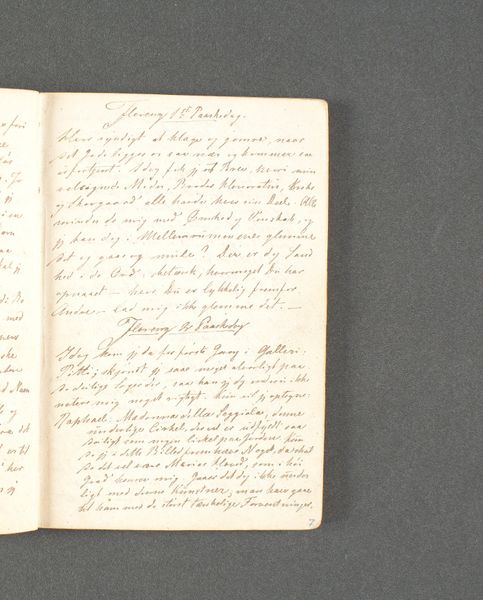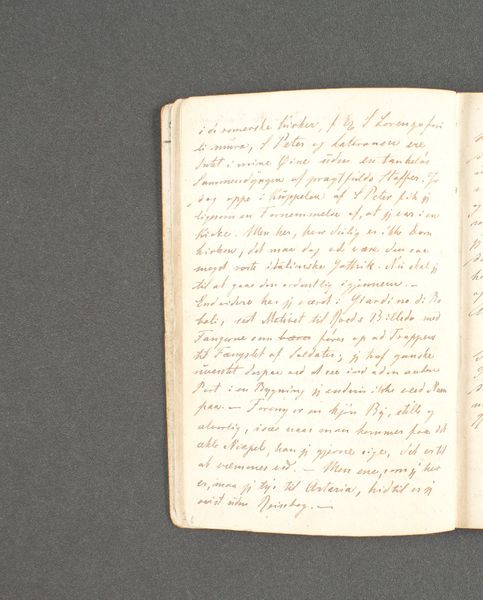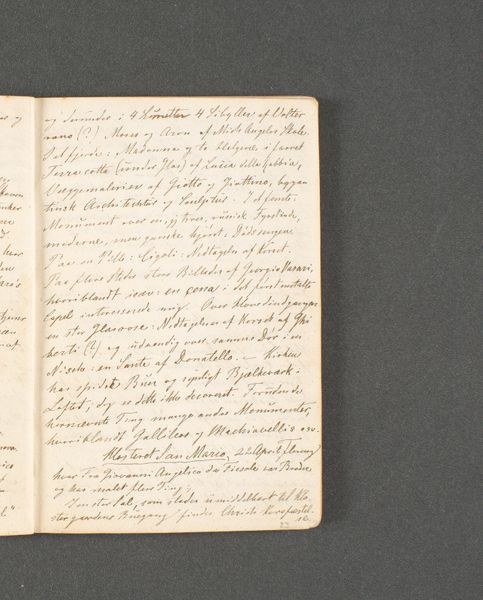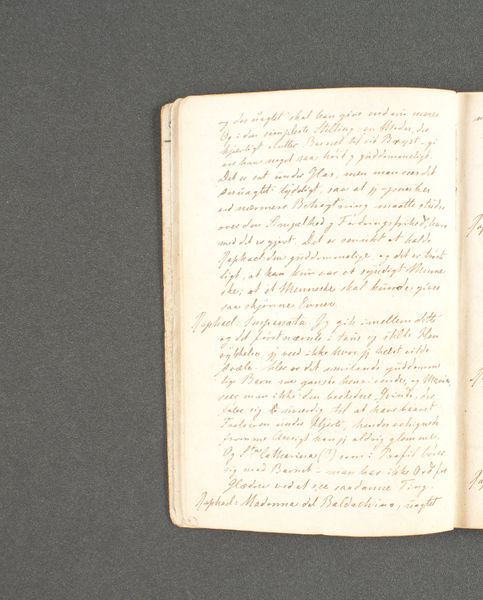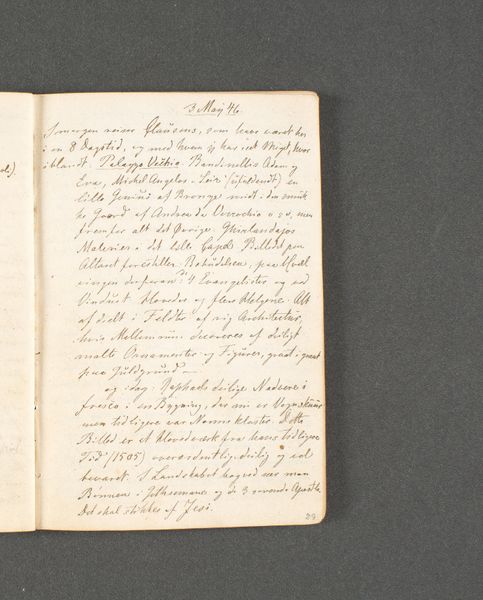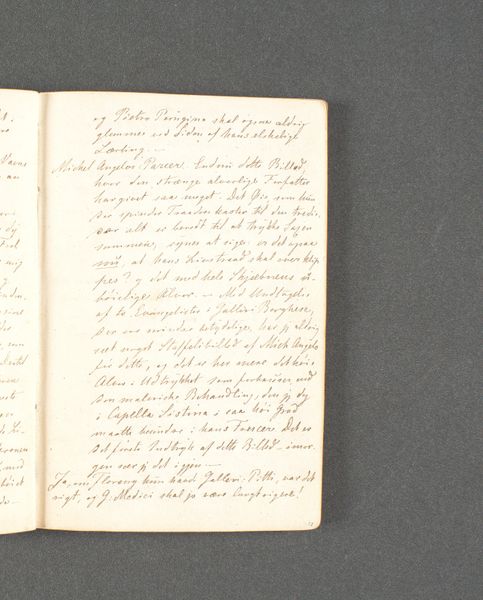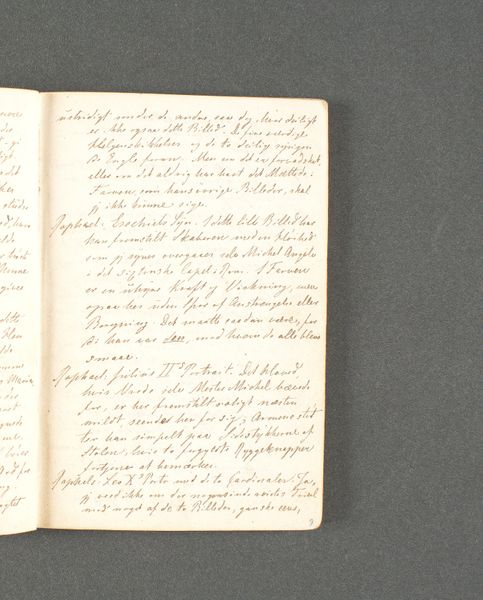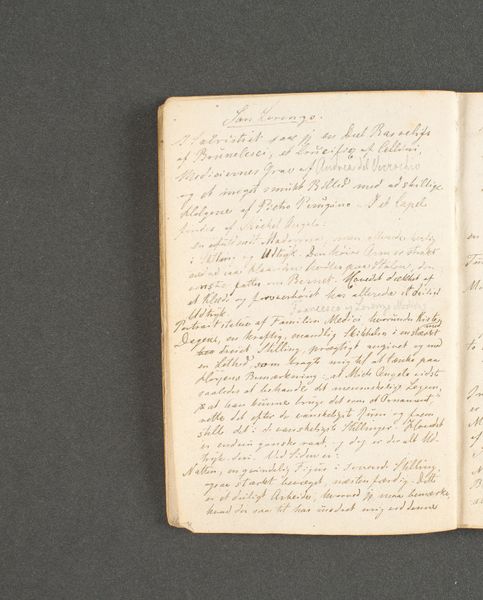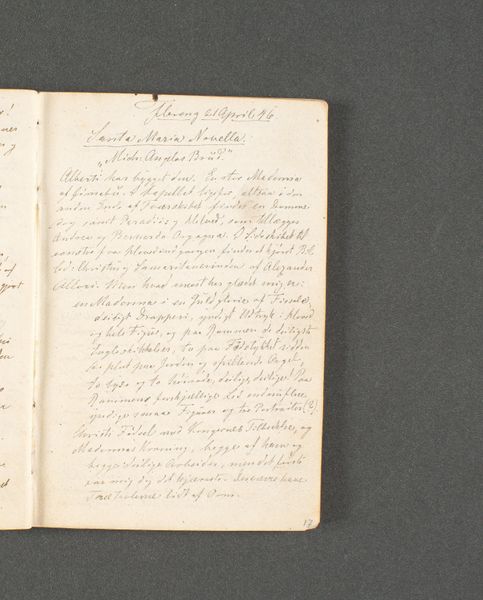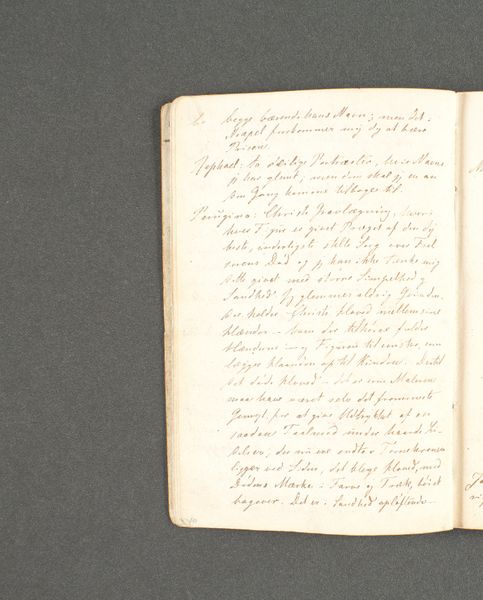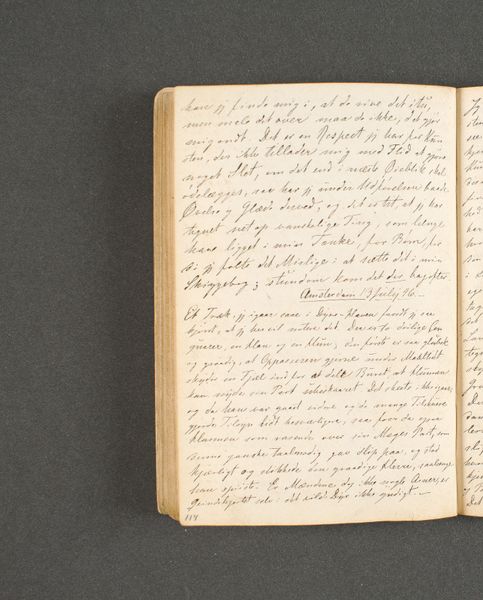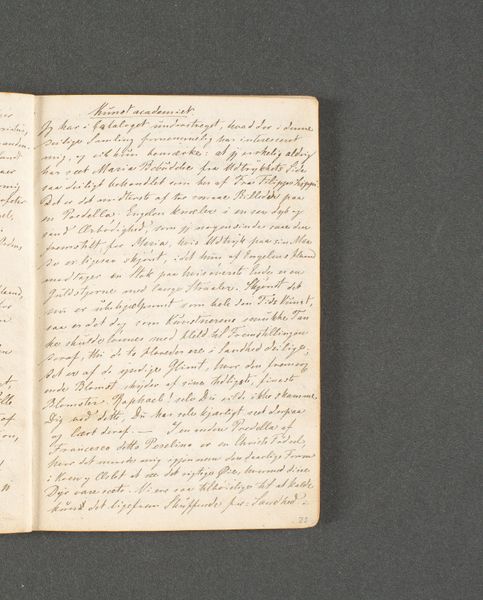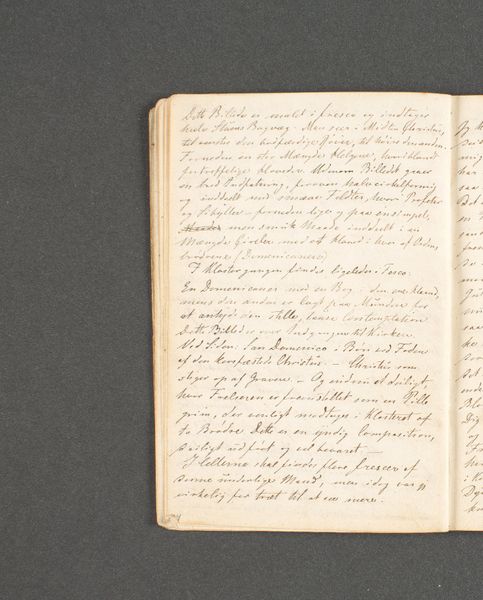
drawing, paper, pen
#
drawing
#
book binding
#
paperlike
#
sketch book
#
hand drawn type
#
personal journal design
#
paper texture
#
paper
#
personal sketchbook
#
journal
#
romanticism
#
sketchbook drawing
#
pen
#
genre-painting
#
design on paper
Dimensions: 131 mm (height) x 89 mm (width) (bladmaal)
Curator: Let's consider this page from Johan Thomas Lundbye's 1846 travel journal, "Rejsedagbog. Firenze." What are your first thoughts on encountering this personal reflection? Editor: It feels so intimate, like stepping into someone's private thoughts. It is a page of script in Danish, in ink on paper. It seems dense. It gives an insight into the Romantic artistic mind, and makes me want to know, what did Lundbye consider important enough to record? Curator: Exactly. Look closely, it appears to be musings, referencing people and places – perhaps an observation of the world filtered through his own experiences. Now, think about the historical context. What do you think the act of physically writing, as opposed to sketching, tells us about his intent or relationship with this journal? Editor: Perhaps the writing signals a more immediate response. Like capturing thoughts and emotions quickly rather than meticulously rendering a scene? It's interesting to consider how language, even in a personal diary, can reflect the culture of the time and maybe even societal norms regarding self-expression. Curator: Precisely. During the 19th century, journal keeping for travelers, or those who saw themselves as intellectuals, served as documentation and performed a construction of the self through observation and interaction with their surrounding environment, both built and natural. We can then ask, how does Lundbye position himself in relation to his surroundings through this writing? Does this journal, even without seeing the sketches, act as a form of resistance against the homogenizing forces of burgeoning modern society? Editor: I see your point. This journal isn't just a record, but a statement of individuality within a changing world. It makes me wonder how accessible travel was at this point in time, and who would have even had access to the resources for creating such a thing? Curator: Good question. By looking at Lundbye’s class and his position within Denmark, you could draw some important intersectional analyses here, that you could unpack even without translating the script itself. Editor: Wow, I never considered looking at a journal entry in that way. Thanks, this has been so illuminating!
Comments
No comments
Be the first to comment and join the conversation on the ultimate creative platform.
